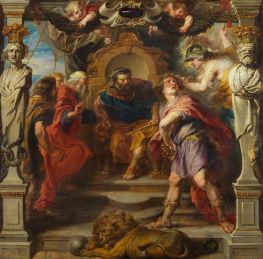
Peter Paul Rubens Painting Reproductions 18 of 18
1577-1640
Flemish Baroque Painter
410 Rubens Paintings

The Family of Jan Brueghel the Elder c.1630/35
Oil Painting
$5533
$5533
Canvas Print
$83.81
$83.81
SKU: RPP-19609
Peter Paul Rubens
Original Size: 106.8 x 108.5 cm
Courtauld Institute of Art, London, UK
Peter Paul Rubens
Original Size: 106.8 x 108.5 cm
Courtauld Institute of Art, London, UK